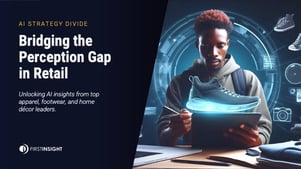By now we all know that the COVID-19 pandemic has accelerated the digital transformation by three to four years, according to McKinsey, with the executives they interviewed saying that “at least 80 percent of their customer interactions are digital in nature.” When personal interactions have been almost entirely supplanted by clicks, how do brands need to reimagine their digital customer journey as it relates to e-commerce?
Prior to lockdowns caused by the spread of the Coronavirus, many companies had perfunctory e-commerce sites to supplement their in-store experiences. These sites would be used to help optimize search, as well as to offer perhaps a teaser of their assortment because most retailers didn’t want to sacrifice in-store sales. Rarely was the entire inventory available online, and equally rare was accurate visibility into inventory. How many times have you been targeted for an item just to find out at the end of the order process that the item is unavailable?
After the past 18 months, when it became a matter of life or death, multi-platform retailers finally understood that they needed to treat their website equally, if not better, than they did their physical stores. It’s no surprise that the websites that deliver the most personalized customer journey have driven the most loyalty—and sales—from their consumer base. Gartner recently predicted a 15 percent profit boost for “e-commerce sites that successfully manage personalization on their websites.” In a nutshell, a personalized customer journey is putting the customer at the center of everything. In other words, we have finally arrived at the much-heralded but little realized “Omni-Channel” experience.
How do you put the customer at the center of everything? Linking previous site visits, purchases, and customer look-alikes helps, as well as understanding what products in your assortment are trending at the moment. Bringing together relevant assortments, Voice of the Customer data, and predictive analytics gives brands the ability to be fully customer-centric, allowing the customer to dictate how they want to shop regardless of channel.
A vital component to conversion is showing the customer exactly what they are looking for, which sounds deceptively easy, but many retailers get it wrong. Amazon is the best at this, but how can small and medium-sized retailers compete with that 800-pound gorilla? Klevu, an artificial intelligence-enhanced search and discovery tool, gives retailers of any size Amazon-like search functionality. User experience is critical: sixty percent of customers will leave a site if they cannot find what they are looking for, which means that there is enormous upside in improving search functionality. When search and discovery are powered with machine learning, conversion rates jump to a phenomenal 25 percent or higher, compared to an industry standard of just 3 – 5 percent.
Engaging the Voice of the Customer can illuminate what works and what doesn’t for an e-commerce retailer’s site. For example, one school uniform company, wanted to revamp their website and understand better how their customers wanted to shop. The objective was to test different options for sizing technologies, and customer service support. Never underestimate the sizing conundrum—sizing presents one of the biggest challenges to conversion on apparel sites overall. The data found that respondents overwhelmingly preferred to physically measure their children and then store the measurements on the site for future purchases. This option also turned out to be the least expensive for the consumer, so spending a little extra time to test wound up costing the customer less in the long run. Another surprising finding that cost our customer less money: consumers were fine with a 12-hour window for customer service by phone and preferred to be called back later by a live person rather than chatting with a bot online after hours.
Perhaps the best way to improve the overall customer experience is by using predictive analytics. Companies like Levi’s use predictive analytics to help them understand how much inventory they need to have on hand. Supply chain disruptions caused by the pandemic have created headlines—and empty shelves—all over the world. According to Supply Chain Digital, in just this quarter, supply chain disruptions have cost Levi’s around $7 million. In an effort to prevent future losses, Levi’s has begun using AI-enhanced forecasting. As Levi’s CEO Chip Bergh told the publication, “…AI-driven demand forecasting improved accuracy. So, scaling it should enable more precise inventory investment, lead to fewer markdowns and clearance, prevent waste, and enhance sustainability.” Utilizing predictive analytics can’t avert Black Swan events like the COVID-19 crisis, but it can manage customers’ expectations on product, pricing, availability, and delivery times.
Personalizing the customer journey, listening to the Voice of the Customer, and putting predictive analytics to work will be the only way that any retailer— from grocery stores to global luxury brands—will remain competitive in the very near future. We know that the customer is always right, but offering the customer exactly what they want in a shopping experience designed just for them will make omni-channel promises a reality.

















